News
20 Years of EPJ
- Details
- Published on 19 December 2018
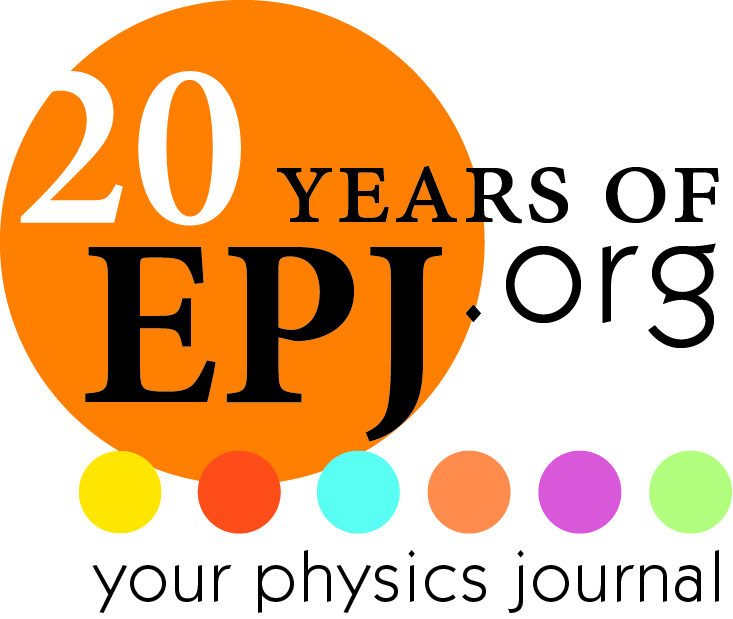
This year has seen the 20th anniversary of the founding of EPJ, the European Physical Journal. We would like to thank all our editors, authors, referees and readers for contributing to EPJ’s success.
Merry Christmas and Happy New Year!
The EPJ Publishers
EPJ H Highlight - The coming of age of plasma physics
- Details
- Published on 19 December 2018

The story of the generation of physicists involved in the development of a sustainable energy source, controlled fusion, using a method called magnetic confinement
Once upon a time, people thought that electrons and ions always stuck together, living happily ever after. However, under low density of matter or high temperatures, the components of matter are no longer bound together. Instead, they form plasma, a state of matter naturally occurring in our universe, which has since been harnessed for everyday applications such as TV screens, chip etching and torches, but also propulsion and even sustained energy production via controlled fusion.
In a fascinating editorial for a special plasma issue of EPJ H, called “Plasma physics in the 20th century as told by players”, three physicists share their perspectives on key events in the early history of plasma physics, in the first half of the 20th century. First, Patrick Diamond, from the University of California San Diego, USA, shares his recollections of the early days of wireless transmission and the description of the ‘Heavyside Layer’ (the electrically conducting layer of the upper atmosphere, which transmits radio waves). In turn, Yves Pomeau from the Ecole Polytechnique in Palaiseau, France, talks about the role of Irving Langmuir in the development of plasma physics theory, namely his calculation of the frequency of oscillation of electrons in a plasma environment with much heavier ions. Lastly, Uriel Frisch from the University Cote D’Azur in Nice, France, describes the birth of nuclear fusion theory.
EPJ B Highlight - Holey graphene as Holy Grail alternative to silicon chips
- Details
- Published on 19 December 2018

Novel spintronics applications could stem from introducing holes into graphene to form triangular antidot lattices, granting the material new magnetic properties
Graphene, in its regular form, does not offer an alternative to silicon chips for applications in nanoelectronics. It is known for its energy band structure, which leaves no energy gap and no magnetic effects. Graphene antidot lattices, however, are a new type of graphene device that contain a periodic array of holes - missing several atoms in the otherwise regular single layer of carbon atoms. This causes an energy band gap to open up around the baseline energy level of the material, effectively turning graphene into a semiconductor. In a new study published in EPJ B, Iranian physicists investigate the effect of antidot size on the electronic structure and magnetic properties of triangular antidots in graphene. Zahra Talebi Esfahani from Payame Noor University in Tehran, Iran, and colleagues have confirmed the existence of a band gap opening in such antidot graphene lattices, which depends on the electron’s spin degree of freedom, and which could be exploited for applications like spin transistors. The authors perform simulations using holes that are shaped like right and equilateral triangles, to explore the effects of both the armchair-shaped and zigzag-shaped edges of graphene holes on the material’s characteristics.
EPJ B Highlight - Preventing concrete bridges from falling apart
- Details
- Published on 19 December 2018

Concrete degradation from sulfuric acid can be avoided by finding ways of preventing its gas precursor from adsorbing into concrete
Extremes of temperature, rain, exposure to corrosive substances - all of these environmental factors contribute to the degradation of concrete. Specifically, a gas present in our environment, called hydrogen sulphide, turns into sulphuric acid, a corrosive substance, when combined with rainwater. In a new study published in EPJ B, Matthew Lasich from Mangosuthu University of Technology, Durban, South Africa, examines the adverse consequences of the adsorption of natural gas constituents found in our environment - and mixtures of several such gases -into one of the materials that make up concrete: cement hydrate. Lasich found that the preservation of concrete infrastructure from the corrosive effects would require a pre-treatment targeting the adsorption sites in cement hydrate, where the majority of hydrogen sulphide molecules become attached. However, this approach could prove difficult because of their wide distribution.
EPJ Plus Focus Point on New Technologies Related to Intentional and Accidental Release of CBRNe Agents
- Details
- Published on 19 December 2018

Since the events of September 11th 2001 and the anthrax attacks in America of the following month the general consensus is that there is a realistic possibility of some form of unconventional terrorist attack in the western world and that this could involve CBRN material [i.e., Chemical, Biological, Radioactive, Nuclear and explosive events]. It is therefore vital that local authorities and agencies operating in the National and International frameworks are prepared to respond, as effectively and efficiently as possible, to any crisis scenarios resulting from such non-conventional events.
This focus point collects some innovative tech solutions presented during the first international conference on CBRNe - SICC 2017, a conference devoted to promoting the dissemination of the different methodologies, techniques, theories, strategies, technologies and best practices on the prevention and mitigation of CBRNE risks. The conference intended to propose new solutions to reduce the risk factors related to CBRNe events and to promote the fruitful inter-professional collaborations between university and military/public experts, specialized operators, decision makers and the industry.
EPJ E Highlight - Sac with spiral surface patterns facilitate substance delivery through biological membranes
- Details
- Published on 17 December 2018
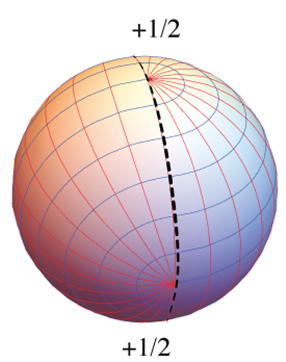
Faceted microfilms made up of liquid crystals arranged in spiral patterns can help squeeze through membranes and deliver helpful molecules
Imagine a micron-sized ball of fluid enclosed in a thin film, similar to the film in soap bubbles, but made up of molecules resembling liquid crystal. These molecules can lower their overall energy by aligning their directions with their ever-changing neighbours—a state referred to as smectic phase. This means stacks of parallel stripe-like liquid-crystal layers form in the film. In a new study published in EPJ E, Francesco Serafin, affiliated with both Syracuse University, New York, and the Kavli Institute for Theoretical Physics (KITP) at UCSB, USA, together with his advisor Mark Bowick, also at the KITP, and Sid Nagel, from the University of Chicago, IL,USA, map out all the possible smectic patterns of such spherical films, or sac, at zero temperature. They determine the conditions under which it becomes easier for such sacs to pass through biological membranes and, potentially, deliver molecules attached to them at specific locations.
EPJ Plus Highlight - On the trail of the Higgs Boson
- Details
- Published on 05 December 2018
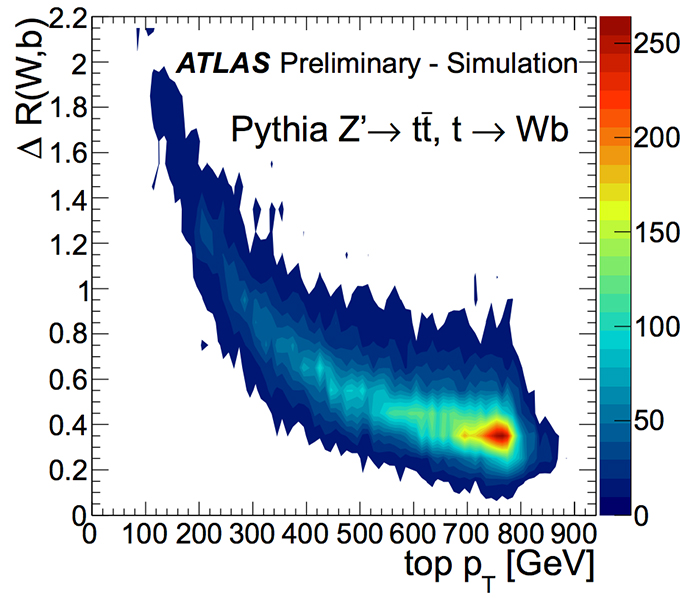
The elusive particle won't share all the secrets of its creation mechanism at once
For the physics community, the discovery of new particles like the Higgs Boson has paved the way for a host of exciting potential experiments. Yet, when it comes to such an elusive particle as the Higgs Boson, it's not easy to unlock the secrets of the mechanism that led to its creation. The experiments designed to detect the Higgs Boson involve colliding particles with sufficiently high energy head-on after accelerating them in the Large Hadron Collider (LHC) at CERN in Geneva, Switzerland. In a quest to understand the production mechanisms for the Higgs Boson, Silvia Biondi from the National Institute of Nuclear Physics, Bologna, Italy investigated the traces of a rare process, called ttH, in which the Higgs Boson is produced in association with a pair of elementary particles referred to as top quarks. Her findings can be found in a recent study published in EPJ Plus. Future LHC experiments are expected to yield even more precise measurements of the Higgs Boson's ability to couple with particles that physicists are already familiar with.
EPJ A Highlight - The P2-Experiment - A future high-precision measurement of the weak mixing angle at low momentum transfer
- Details
- Published on 30 November 2018
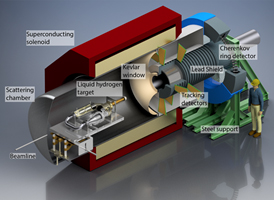
The P2-experiment at the new electron accelerator MESA in Mainz aims at a high-precision determination of the weak mixing angle at the permille level at low Q2. This accuracy is comparable to existing measurements at the Z-pole but allows for sensitive tests of the Standard Model up to a mass scale of 50 TeV. The weak mixing angle will be extracted from a measurement of the parity violating asymmetry in elastic electron-proton scattering. The asymmetry measured at P2 is smaller than any asymmetry measured so far in electron scattering, with an unprecedented accuracy. This review just published in EPJ A describes the underlying physics and the innovative experimental techniques, such as the Cherenkov detector, beam control, polarimetry, and the construction of a novel liquid hydrogen high-power target. The physics program of the MESA facility comprises indirect, high-precision search for physics beyond the Standard Model, measurement of the neutron distribution in nuclei, transverse single-spin asymmetries, and a possible future extension to the measurement of hadronic parity violation.
EPJ Plus Focus Point on Modern Astronomy: Selected Issues in Nuclear and High Energy Astrophysics
- Details
- Published on 27 November 2018
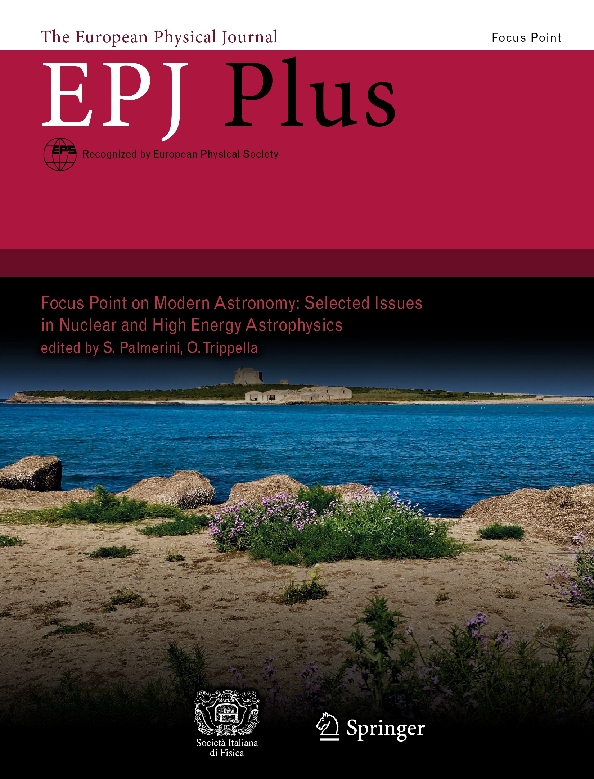
Modern Astronomy is a multidisciplinary science that evolved widely with respect to old traditional and romantic discipline made at a telescope, observing stars and taking notes of their movements in the sky. Nowadays, high-resolution stellar spectra from gigantic reflectors like VLT, images of planets and distant galaxies made at infrared wavelengths where cool matter or redshifted objects are best seen, high-definition maps of galaxies and the cosmos provided by space-borne telescopes are invaluable sources of data. However, they give us only a partial vision of the universe, which, to be studied and understood, needs to be scrutinized not only in the electromagnetic spectrum but also through probes of different nature, such as high energy particles (cosmic rays) accelerated by Galactic mechanisms, neutrinos from nuclear processes and gravitational waves from space-time perturbations. In this much broader picture, "classical" astronomers, stellar physicists, experts of nucleosynthesis, nuclear and particle physicists and geochemists work together to study the universe and understand its formation and evolution. Since many experts in different fields are needed to undertake this arduous task, it is crucial that the training of young researchers be focused both on providing them with a general physical background, and on specializing them in some specific field among those mentioned.
This focus point aims to give the students and general readers an overview on the state of the art of modern research in stellar modelling and nucleosynthesis, in Gamma- and X-ray astronomy, in astro-particle physics, and in experimental low-energy nuclear astrophysics.
EPJ B Colloquium - The strong disorder renormalization group (SDRG) method for random systems
- Details
- Published on 26 November 2018

The strong disorder renormalization group (SDRG) approach has been developed to study the low-energy excitations and spatial and temporal correlations of random systems. Since 2005 it has been extended in many new directions and beyond its initial scope. In this EPJ B Colloquium Ferenc Iglói and Cécile Monthus give an overview of the many recent developments.




